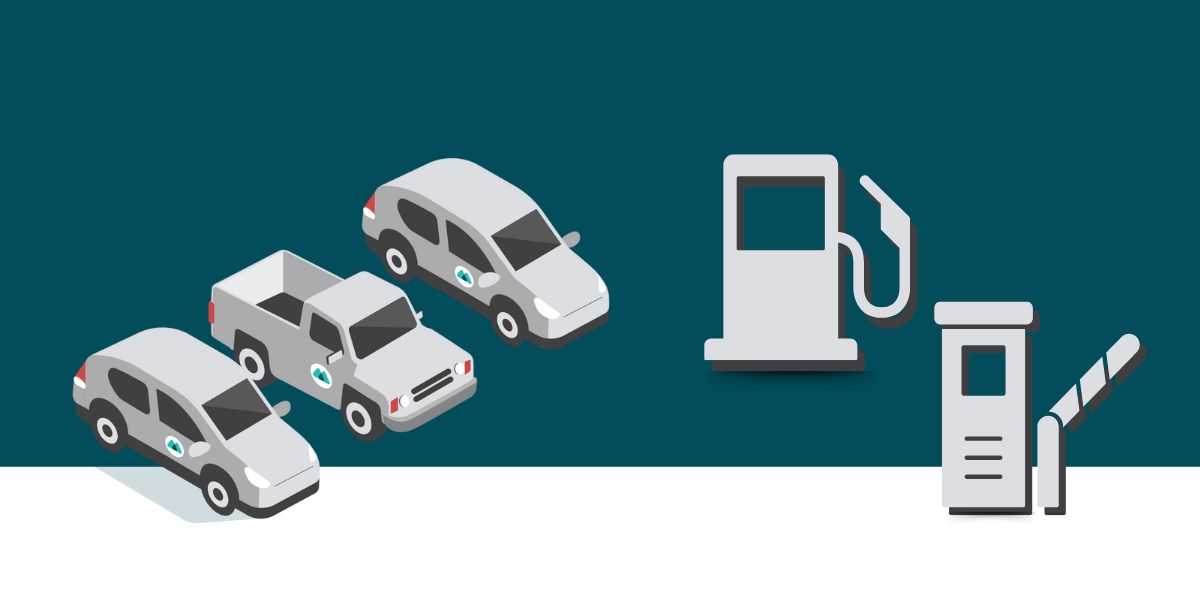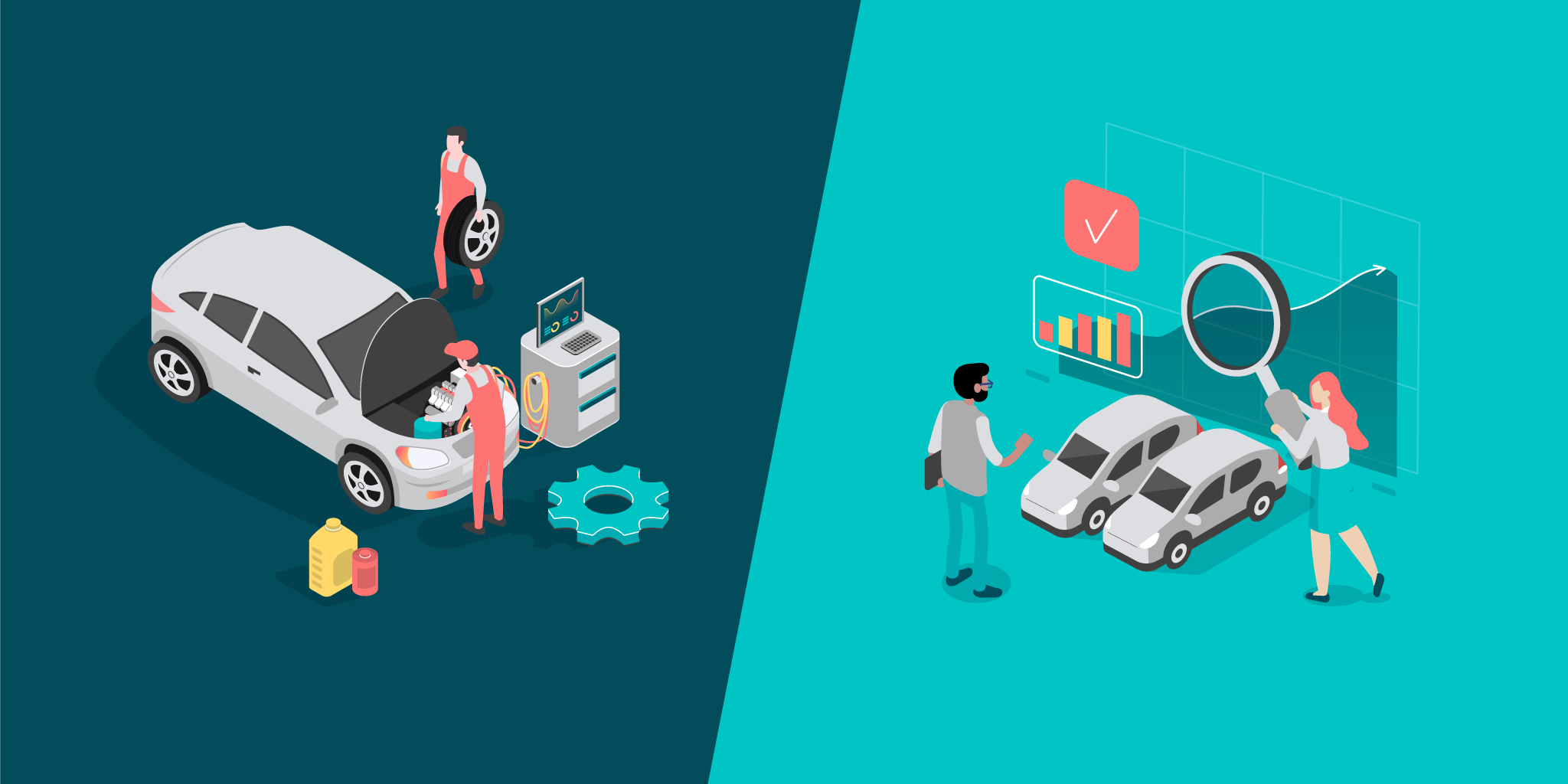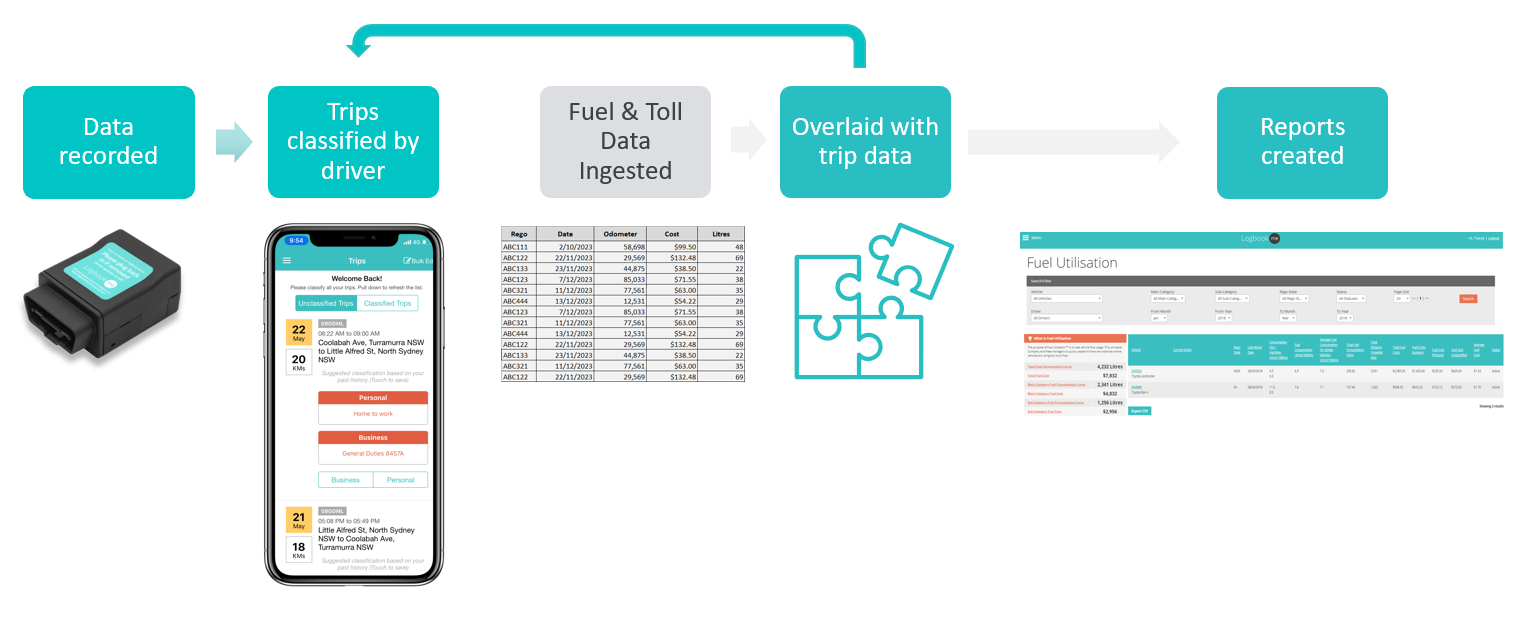
The quick read – what you need to know
- Capturing and centralising fuel and toll reporting will give you completeness and greater visibility over your fuel and toll costs.
- Overlaying trip data to fuel and toll expenses is critical to understanding actual usage and ensuring your fleet is running efficiently and expenses are in line with policy.
- Detailed exception reporting will give further insight into anomalies where misuse may be occurring and where potential cost savings may be available.
With petrol prices and toll fees the highest they have been in quite some time, what are organisations doing to manage the rising costs of fuel and tolls?
Fuel and toll expenses can make up a sizable portion of the operating costs of vehicles, and with supply chain costs increases continuing to impact organisations, many are looking at ways to find savings where possible.
What we know about fuel and tolls management in fleet
Typically, fleets are billed separately for their fuel and toll expenses, making it easy for drivers to transact, but monthly invoicing often lacks visibility into specific usage patterns, with little detail or context to what the fuel and toll costs relate to.
Finance teams will often pay for them without any question about what their drivers have actually used the vehicles for. While this may be status quo for many organisations, (perhaps these are part of an employee’s remuneration and the costs are budgeted for), focus is also shifting to better understand consumption to a) better manage adherence to policy and b) obtain transparency of usage to better manage these expenses.
If fleet or finance teams are interested in understanding why there might be fluctuations in fuel and toll expenses, linking your expenses to vehicle usage can help explain whether increases are consumption based or actual costs are increasing.
So, how can fleet teams link their fuel and toll expenses to vehicle usage?
Centralising your fleet and toll data
Whether your fleet is small or large, assigned or pool, or across many locations, centralising your fleet data is vital to giving you greater awareness and transparency over how your fleet is being used.
The process of centralising data may take some effort and will be influenced by factors like:
- The size of the fleet
- To what extent your fleet management is centralised or decentralised
- Number of fuel card providers
- Number of states which the fleet is in and which have tolls
- Who in the organisation owns and controls the data.
At LBM, most of our customers draw on the advantages of a hybrid fleet management model. This may mean data could be held at different areas of the organisation, and efforts are made to gather this information and consolidate it in the one place.
For fuel and toll expenses, centralising of this data for LBM clients is usually done via a simple data ingestion of fuel card data and toll transactions into our system, which then automatically allocates fuel and tolls consumption against the vehicles, relevant driver (for both assigned and share cars), and provides roll-up reporting of fuel and toll costs based on teams, cost centres, projects etc…
This way local teams can go about managing their operational needs as required, knowing that all information is still being centralised and reported back up for oversight and management of total costs.

Connecting the dots on usage
Overlaying trip data from your vehicles to your fuel and toll expenses is where you can start to unpack the relationship between fuel and toll costs and vehicle usage. Trip data sourced from your in-car telematics device, gives context around trip events including kilometres driven, business and personal use, driving behaviour and more. Matching this against your fuel and toll costs can help identify more of the specifics of what the fuel and toll transactions actually related to.
From here, the overlay of fuel and toll transaction data to vehicle use can help unlock and explain certain trends and anomalies, cost differences between similar vehicles in your fleet, and identification of when certain transactions may be against policy.
How it works – working backwards:

What can you do with the data
Once your data is flowing into the LBM system, you can now review fuel and toll costs reported by specific parameters – business and personal cost of fuel and tolls, fuel costs by projects, or business areas etc…
Going a step further and comparing fuel consumption based on manufacturer’s specifications can also reveal further patterns, trends and anomalies.
Once anomalies are identified, exception reports narrow in on the cause or explanation behind certain trends. These exceptions are usually pre-set benchmarks set by organisations and include over tank capacity, over filling, under filling and wrong/restricted fuel type for our fuel management software, and tolls without trips and toll locations not matching trips for our toll management software.
An example – fleet fuel management:
|
Vehicle specifications
|
Activity captured by LBM using fuel card data and GPS data | Consumption trends / exceptions flagged | Potential reason |
|
6.9L/100kms average consumption
|
11.2L/100kms average consumption trend | Consumption is sitting higher than the manufacturer’s recommendation. |
There could be an issue with the vehicle – leaking or using more fuel than it should for another reason. OR |
|
48 litre tank capacity
|
60 litre fuel transaction
|
Over tank capacity | Driver is filling up a different vehicle. OR Driver is filling up equipment, such as a lawn mower. |
|
Unleaded
|
Premium Unleaded fuel transaction | Restricted/wrong fuel type | Driver has put in a restricted fuel type as per company policy. |
These are some real examples flagged as exceptions that can help you identify where there may be opportunities to better manage the increase in costs of fuel and tolls in fleet vehicles.
Without trip data and the contextualization of fuel and toll transactions, it can be nearly impossible to understand your opportunities. When made available however, exception reporting is invaluable to quickly identify potential issues in your fleet, ensure it’s running efficiently and provide the information appropriate to set and enforce company policies when needed.
What about electric vehicles?
Electric vehicles will of course have a different need to ICE vehicles when it comes to consumption reporting. Electric vehicles are required to be charged with electricity and where that electricity is sourced, and who’s paying for it, should be reported.
Whether your fleet is powered by fuel or electricity, LBM has all the data capturing and reporting capabilities you’ll need.
Additionally, LBM’s EV home charging reimbursement solution allows drivers to charge their company owned vehicle at home and be reimbursed for the electricity used to charge the vehicle. This is a great way to ensure your fleet stays charged by reducing reliance on public infrastructure and office charging.

The bottom line
When organisations are able to link their fuel and toll activities with trip data, they gain vital visibility over vehicle use and become empowered to make better decisions for their fleet.
Get in contact with our team today to find out more about our fuel and toll reporting capabilities.

